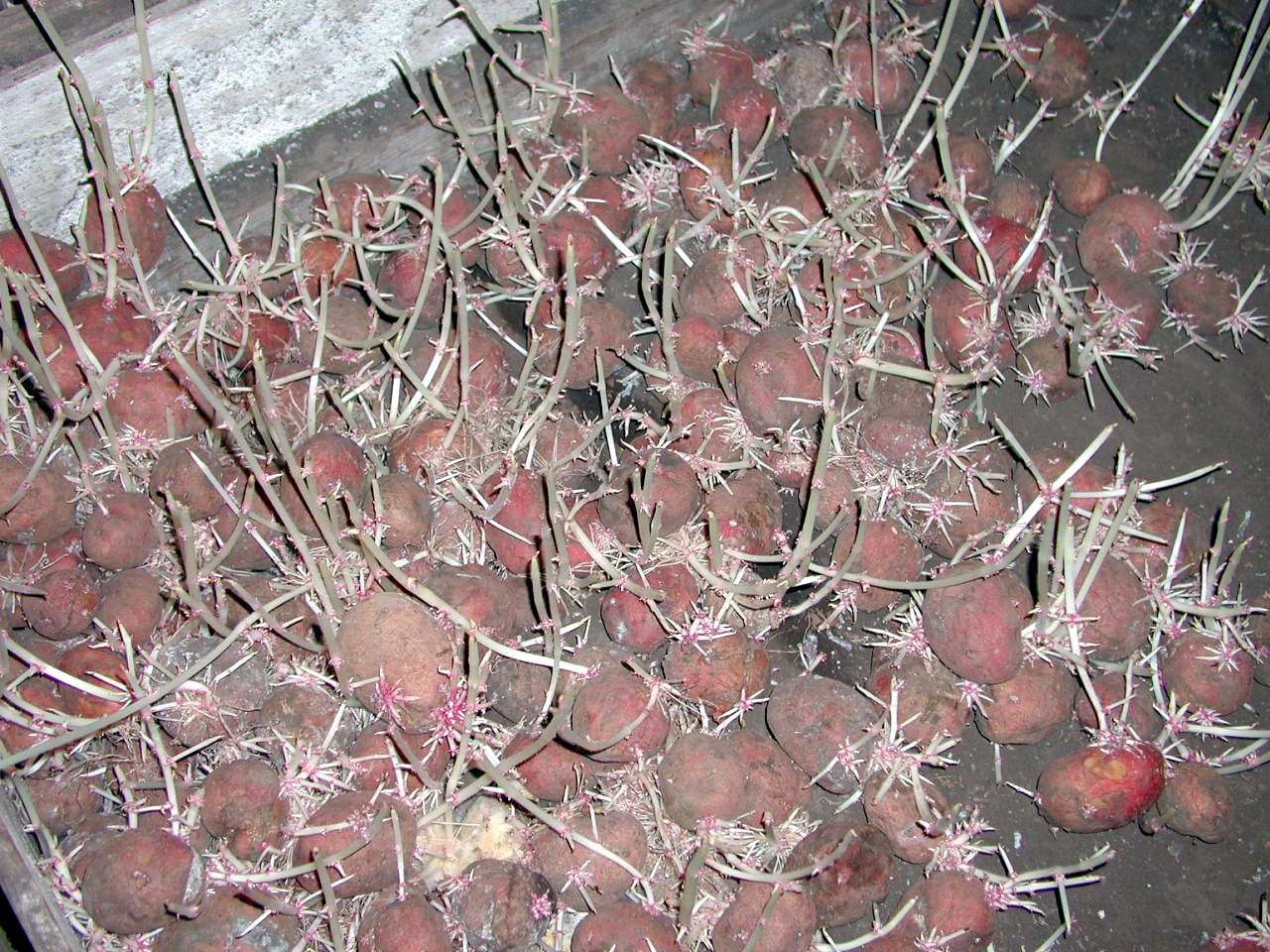Resource Library
Plant of the Week: Plant Pandemics
March 2020 will no doubt represent some kind of turning point for the world, but which way humanity pivots after the corona virus pandemic wanes is anybody’s guess. Pandemics also happen in the plant world with some having profound and lasting effects while others have passed by quietly in the night. Let us consider some of these.
Yesterday I saw an ad from I-Hop, promoting green pancakes for St. Patrick’s Day. Were it not for the Irish potato famine of the 1840s, we would probably have had neither green pancakes nor the Irish celebration in the United States. First word of the potato blight hit the press in the summer of 1845 when fields in from Poland, Germany, France, Belgium, England and Ireland were blighted as if by a hard freeze in midsummer. When dug, any potatoes that were produced were marked with dark patches, symptomatic of the disease. These blighted potatoes could not store, rotting away over winter.
The cause of the famine was partly due to the introduction and rapid spread of a new disease. But perhaps even more importantly, it highlighted the failure of an economic system that kept millions of impoverished farm families trapped in a system that forced them to rely almost exclusively on potatoes for much of their wintertime sustenance. It is estimated that about 1 million people, many of them Irish Catholics, starved during the Great Hunger; another million fled the poverty and hunger, leading to us celebrating a Catholic saint on March 17th each year with green pancakes.
Tree related pandemics are especially noticeable because they change what we see around us. Two notable diseases, chestnut blight of the American chestnut and Ozark chinquapin and Dutch elm disease of the American elm are good examples. Chestnut blight was accidentally introduced into the United States in 1904 in a shipment of nursery stock. A year later it was killing trees in New York City. It spread through the great eastern deciduous forest, reaching the Ozarks in the 1950s. Behind, it left dead trees, effectively eliminating one of the dominant tree species of the American forest.
Dutch elm disease, first identified by a Dutch pathologist in 1921 – hence its name, made its way to the United States in the 1920’s and continues its march across the country to this day. Because many cities had lined almost all their streets with American elms, the effect of the disease was dramatic. After the arrival of Chestnut blight, stringent quarantine measures were put in place to prevent the introduction of foreign insects and diseases. If you’ve ever had your banana seized when coming through customs, you know how this first line of defense works. Quarantines undoubtedly slow down spread, but they seldom stop accidental introduction.
In 1970, I made my first cross country trip through the midwestern corn belt. I went in early June and was amazed by the green lushness of a crop we could not grow on our dryland wheat farm. But that was the year of the southern corn leaf blight pandemic which began striking crops during midsummer. The leaves were blighted and burned away by harvest time, leading to 50 100 percent reduction of yield.
The reason for this pandemic outbreak on the world corn crop was the failure of seed breeders to recognize the need to maintain diversity in the population. A useful trait, cytoplasmic male sterility, had been identified in Texas and eliminated the need to manually detassel corn plants to create hybrid seed. In 1970, 85 percent of the corn planted across the nation contained genes from that male sterile parent. Unfortunately, it was also very susceptible to southern corn leaf blight. Though scientists urged growers to never repeat that mistake, I fear many companies and nations have forgotten that example as they strive for more and more uniformity.
The Covid-19 virus will pass into our memory soon enough. Hopefully, in its wake it will leave behind policies and procedures that help reduce the likelihood of future pandemics. And, perhaps cause us to examine big-picture parts of our social, economic and work-a-day world to help all of us have better lives.
For more information about horticulture or to see other Plant of the Week columns, visit Extension’s Website, www.uaex.uada.edu, or contact your county extension agent. The Cooperative Extension Service is part of the U of A Division of Agriculture.
